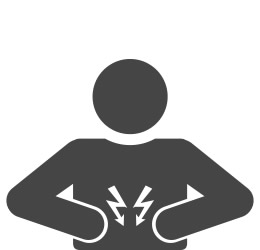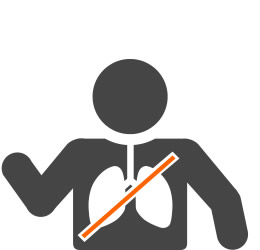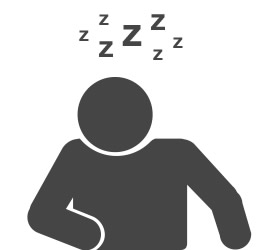Recognise the Symptoms of CO Poisoning
The symptoms of carbon monoxide poisoning can easily be mistaken for the other illnesses such as the flu, food poisoning or a viral infection. Prolonged exposure to CO can lead to these symptoms gradually getting worse and higher levels of carbon monoxide can cause more severe symptoms.
The Main Symptoms to Look For
Being able to recognise the main symptoms of carbon monoxide poisoning could save lives and ensure that carbon monoxide poisoning isn't mistaken for something else. It is important to remember that your symptoms will be less severe when you are away from the source of carbon monoxide and to check if others, including pets, are experiencing similar symptoms.
The main symptoms to look out for include:

Persistent Headaches
Having persistent dull headaches and tension type headaches.

Dizziness
Having waves of dizziness or feeling light headed and off balance.

Nausea / Vomiting
Feeling like you need to be sick (nausea) and actually being sick (vomiting).

Stomach Pains
Pains in your stomach or lower abdomen, sometimes accompanied by diarrhoea.

Difficulty Breathing
Sudden shortness of breath or difficulty breathing (dyspnoea).

Tiredness
Having no energy or feeling tired, sleepy, lethargic and sluggish.

Sudden Collapse
Sudden collapse, seizures or loss of consciousness.

Confusion
Confusion, difficulty concentrating and becoming easily irritated.
Treating Carbon Monoxide poisoning
If you think you or someone else is suffering from carbon monoxide poisoning you should seek medical advice ASAP. Your symptoms will often indicate if you have carbon monoxide poisoning but a blood test will confirm the amount of carboxyhaemoglobin in your blood. You will also need to make sure the area where you were exposed to carbon monoxide can be made safe before you or anyone else returns.
If your level of carboxyhaemoglobin is above 30% this would indicate severe carbon monoxide exposure and you will require medical treatment.
Oxygen Therapy
Standard oxygen therapy can be given to patients that have been exposed to high levels of carbon monoxide. 100% oxygen will be supplied through a tight-fitting mask. Inhaling concentrated oxygen allows the body to quickly replace the carboxyhaemoglobin.
Hyperbaric Oxygen Therapy
Hyperbaric oxygen therapy (HBOT) floods the body with pure oxygen and may be offered as a treatment in some cases of carbon monoxide poisoning. It is usually recommended in cases where there has been extensive exposure and nerve damage is suspected.
(doc:544 V1.0). Our articles are reviewed regularly. However, any changes made to standards or legislation following the review date will not have been considered. Please note that we provide abridged, easy-to-understand guidance. To make detailed decisions about your fire safety provisions, you might require further advice or need to consult the full standards and legislation.